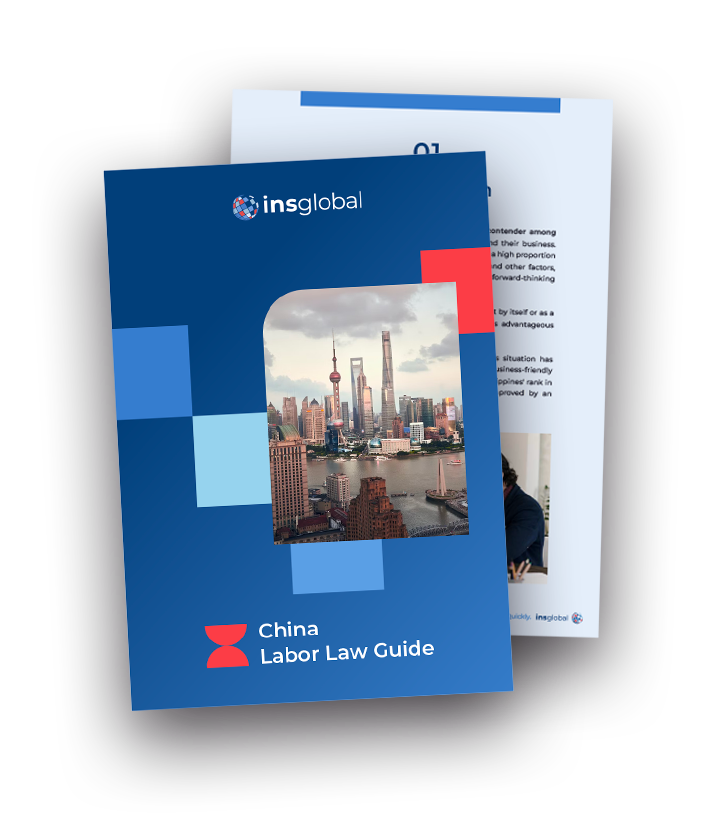China has long since maintained strict foreign exchange controls – a common concern and headache among foreign investors. Businesses will naturally think twice about investing in the first place if they are unsure of their ability to repatriate profits. Recent economic news in China has increased these concerns. Since the massive capital flight out of China in 2015 and 2016, the authorities have tightened capital controls.
The State Administration of Foreign Exchange oversees transfers of funds, either in or out of China. Companies typically repatriate profits through the issuance of dividends. Though highly regulated and costly, this process has remained stable and investors can likely count on this system for the foreseeable future.

Tired of scrolling? Download a PDF version for easier offline reading and sharing with coworkers
In a hurry? Save this article as a PDF
Tired of scrolling? Download a PDF version for easier offline reading and sharing with coworkers.
Fill up the form below 👇🏼
Company Profits
Businesses can repatriate profits after a number of requirements have been met. First, companies pay must pay the 25% corporate income tax on profits. 10% of the remaining amount must be paid to the reserve fund (essentially to be reinvested in their Chinese operation). When the remaining amount is taken overseas, companies are charged a withholding tax.
The withholding tax rate and terms will vary depending on the relevant tax treaty in place between China and the country of the overseas account. In order to receive a favourable withholding tax rate as specified in a tax treaty, businesses must submit an application to their local tax authority.
| Requirements for Profit Repatriation |
|
|
|
|
Check Our China Labor Law Guide
Learn how the Chinese law is applied in all aspects and situations, from an employer and employee perspective

Dividends can be repatriated annually. In order to repatriate dividends, companies must at first prepare all annual tax reports, must settle any losses carried forward, and must have undergone the annual audit. Banks will require documentation of all of this before assisting a company. Dividend repatriation is a lengthy process and can take many weeks. For example, the beneficial owner test alone takes between 2-4 weeks.
| Required Documents for a Bank to Process Dividend Payments |
| Business License |
| Recent audit report of paid-in capital |
| External auditor’s report |
| Certificate of tax filing |
| Tax payable receipt |
| Relevant board resolution on profit distribution |
Paying royalty fees to an overseas entity can result in a lower tax burden than with dividend repatriation. This is due to the fact that there is no withholding or value-added-tax involved. However, these related party transactions are strictly regulated and must be priced at arm’s length. Businesses must be prepared to show tax authorities extensive documentation to demonstrate the arms-length nature of the transaction price. Businesses must provide tax authorities with a contract, a commercial invoice, and a certificate of tax filing.
Another method is the issuance of an intra-firm loan. This is only temporary repatriation, as the loan must be paid back to the Chinese entity. Intra-firm loans require that the Chinese entity have an equity relationship with the partner. Most importantly, the arm’s length principle applies insofar as the interest rate must be set according to the market.
Avoiding Red Flags
Even if all of the standard requirements are met, the State Administration of Foreign Exchange may prevent companies from transferring funds outside of China under a number of circumstances. If profits seem out of line with the industry, they may investigate and temporarily halt transfers. Additionally, it may be more difficult to transfer funds to a tax haven. To avoid bureaucratic delays it is important to have all documentation filled out and to be as transparent with the authorities as possible.

Crackdown on Capital Flight
As investments often take years to reach profitability, prospective investors into China need to gauge the long-term stability of the profit repatriation system and the likelihood of change. When they do so, it is important to remember that China’s capital control policy can dramatically change according to developments in the economic and political environment. After China experienced an episode of capital flight in 2015 and 2016, authorities doubled down on capital controls in a number of ways, including limiting outbound investment. While profit repatriation through the issuance of dividends was not affected, the episode demonstrated to prospective investors that China is willing to risk spooking investors for the sake of other policy goals such as maintaining the value of the RMB.
Repatriation of Funds for Individuals
The RMB cannot be transferred directly. Unlike the Euro or USD, it must first be exchanged into a foreign currency. There are daily limits on exchanging currency as an individual. The individual must have a work permit and be employed in China. Residents on a typical business visa will not be permitted to send funds abroad. In order to transfer money out of China via a local bank, the individual must apply with the State Administration of Foreign Exchange. Additional required documents typically include the passport, employment contract, business license, and tax bills.
The process involves a number of fees including the application fee, transfer fee, and bank commission. Individuals can also use exchange agencies like Western Union and MoneyGram, though fees will tend to be higher and a person is required in the receiving country to pick up the funds.
Conclusion
Companies should develop their profit repatriation strategies very early on. By doing so, companies can rely on a strategic combination of different methods. This will also give businesses flexibility in the event that there are unexpected, bureaucratic problems and delays.
As mentioned above, the State Administration of Foreign Exchange is entitled to halt profit repatriation, at will. To reduce such risks, businesses should stay on top of all taxation and compliance requirements, and remain as transparent as possible with the authorities, giving them no reason to be suspicious.
For companies that want to stay on the right side of Chinese financial laws, a legal support expert like INS Global can offer PEO services to manage all areas of payroll and tax compliance.

SHARE